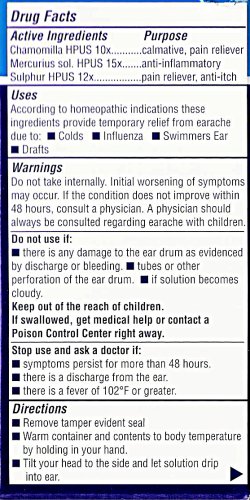For my first post of the new year, here’s an improved version of an old post. I’m using the images from the post in one of my chemistry classes this spring, and I thought I’d share the improved pictures.
Iodine is one of the more unusual things you can find at your family drug store. In pure form, it’s a somewhat shiny solid. From appearance alone, you might mistake solid iodine for some of the things you’d find in the rock bins at Black Market Minerals in Myrtle Beach.
![[Solid iodine]](http://whenchemistsattack.com/wp-content/uploads/2008/01/iodinesolid.jpg)
Solid iodine
What makes iodine unusual? Iodine’s a solid that goes easily from the solid to the gas phase. Also, once iodine gets into the gas phase, it is not colorless and invisible. Iodine vapor is bright purple in color. Solid iodine slowly sublimes (goes from the solid state to the vapor) at room temperature, but you can speed up the process quite a bit by supplying a little heat.If iodine vapor comes into contact with a cold surface, it will deposit (resolidify) on the surface, forming pretty crystals. The same thing happens when water vapor in the atmosphere comes into contact with an extremely cold car windshield – making frost.
To show the phase changes of iodine, I set up an experiment similar to a demonstration from one of my old chemistry books. I took some solid iodine and put it into a beaker, then set the beaker on a hotplate. On top of the beaker, I put a watch glass: a curved piece of glass shaped a little like a shallow bowl. On top of the watch glass, I put some ice. The ice cools the watch glass.
![[Iodine experimental setup]](http://whenchemistsattack.com/wp-content/uploads/2008/01/iodinesetup.jpg)
Setup
To speed up the production of iodine vapor, I turned the hotplate on “low”. After a few minutes, I could just see the color of iodine vapor in the beaker.
![[Small amount of iodine vapor]](http://whenchemistsattack.com/wp-content/uploads/2008/01/iodinelittlevapor.jpg)
A little vapor is visible
Once the hotplate’s temperature gets to about 114 oC (237 oF), the iodine begins to melt, forming a dark purple liquid. The amount of iodine in the vapor state increases.
![[More iodine vapor]](http://whenchemistsattack.com/wp-content/uploads/2008/01/iodinemorevapor.jpg)
More vapor is visible. If you value your nose, keep it away from the vapor.
After more heating, you can see all three phases of iodine inside the beaker.
![[Iodine: Solid, liquid, and gas]](http://whenchemistsattack.com/wp-content/uploads/2008/01/iodineallphases.jpg)
Pick a phase, any phase!
There is a mixture of solid and liquid iodine at the bottom of the beaker. Since the hotplate is providing heat energy, some of the solid iodine melts, forming liquid. Some solid iodine also sublimes, forming vapor. The liquid iodine evaporates, forming more vapor.
Near the top of the beaker and on the cooler upper sides of the beaker, iodine vapor deposits, forming solid iodine crystals. Some iodine vapor condenses to liquid on the warmer lower walls of the beaker, and that liquid then freezes to solid iodine. That’s a total of six different phase changes going on all at once; and we haven’t even discussed the ice on top of the beaker.
The ice? The ice at the top of the beaker melts, removing energy from the iodine vapor and helping it deposit on the bottom of the cold watch glass.
![[Deposited iodine crystals]](http://whenchemistsattack.com/wp-content/uploads/2008/01/iodinecrystals1.jpg)
Deposited iodine crystals, forming from purple iodine vapor
The iodine crystals on the watch glass are flat and shiny – almost metallic in appearance. They look a bit like stalactites.
![[Deposited iodine crystals, closer view]](http://whenchemistsattack.com/wp-content/uploads/2008/01/iodinecrystals2.jpg)
Deposited iodine crystals, closer view
I advise against attempting this experiment yourself, since iodine looks more harmless than it is. Iodine won’t blow up on you – provided you keep it away from combustibles, but iodine can cause chemical burns on contact. Iodine vapors are harmful to the lungs. This sort of experiment needs a fume hood, and solid iodine shouldn’t be handled directly. Plus, buying lots of iodine might make some folks think you’re going to start a meth lab.

![[Burning log cartoon]](http://whenchemistsattack.com/wp-content/uploads/2008/01/log2.png)
![[Solid iodine]](http://whenchemistsattack.com/wp-content/uploads/2008/01/iodinesolid.jpg)
![[Iodine experimental setup]](http://whenchemistsattack.com/wp-content/uploads/2008/01/iodinesetup.jpg)
![[Small amount of iodine vapor]](http://whenchemistsattack.com/wp-content/uploads/2008/01/iodinelittlevapor.jpg)
![[More iodine vapor]](http://whenchemistsattack.com/wp-content/uploads/2008/01/iodinemorevapor.jpg)
![[Iodine: Solid, liquid, and gas]](http://whenchemistsattack.com/wp-content/uploads/2008/01/iodineallphases.jpg)
![[Deposited iodine crystals]](http://whenchemistsattack.com/wp-content/uploads/2008/01/iodinecrystals1.jpg)
![[Deposited iodine crystals, closer view]](http://whenchemistsattack.com/wp-content/uploads/2008/01/iodinecrystals2.jpg)


![[A sample of amethyst]](http://whenchemistsattack.com/blogfiles/amethyst_450.jpg)
![[Amethyst close-up!]](http://whenchemistsattack.com/blogfiles/amethyst_close_450.jpg)
![[Element 118]](http://whenchemistsattack.com/blogfiles/element118.png)